|
Advertisement / Annons: |
Seminar report:
|
How to cure a boring day:Even if our instrument are very advanced today we can't measure everything but we can do computer simulations of extreme environments. This is what this seminar are about and how they simulate neutron star mergers. Some useful links, Neutron star merger:
The multi-messenger picture of merging neutron stars:By Dr. Tim Dietrich
You can read his abstract here: 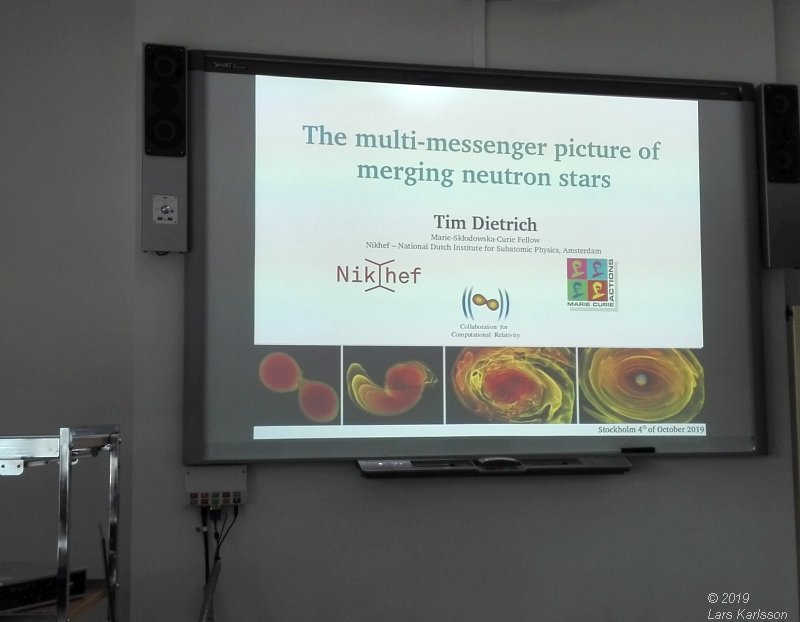
The last 1½ years Tim has been at Nikhef in Amsterdam, before that he was at Max Planck Institute. The seminar was held at Stockholm University 2019. 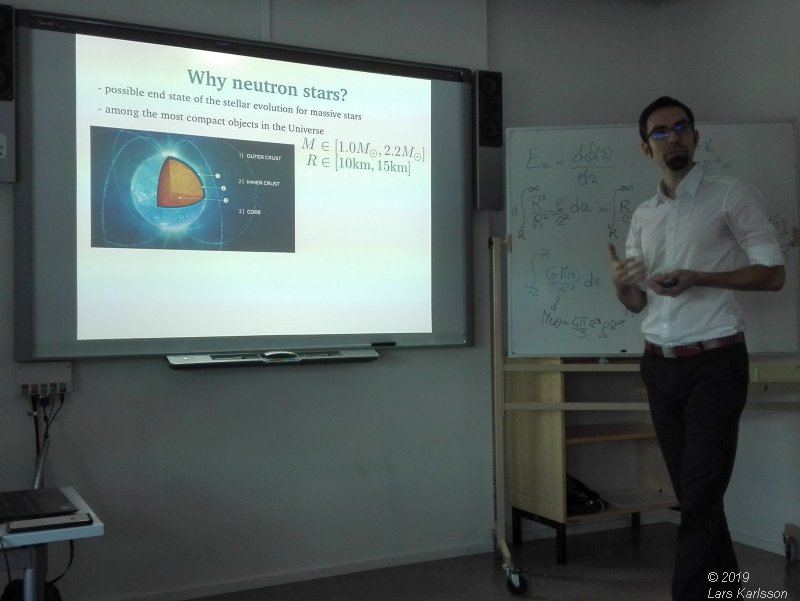
Tim gives some background about neutron stars. They have a mass from 1.0 to 2.2 of our Sun's mass. The radius is only 10 to 15 km thus very high density, up to hundred million tons per cm3, thus, there are so extreme (and interesting) says Tim. They are possible the end state of a massive star. 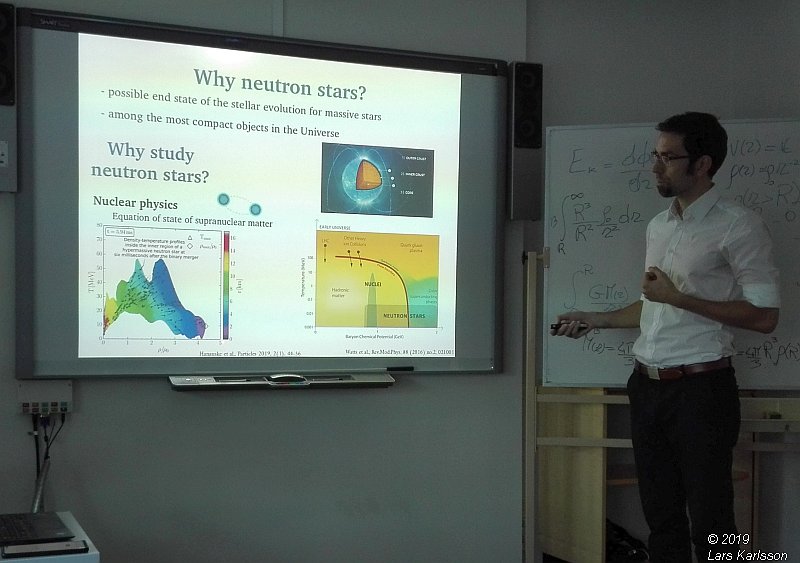
Tim explain the reason to study neutron stars. 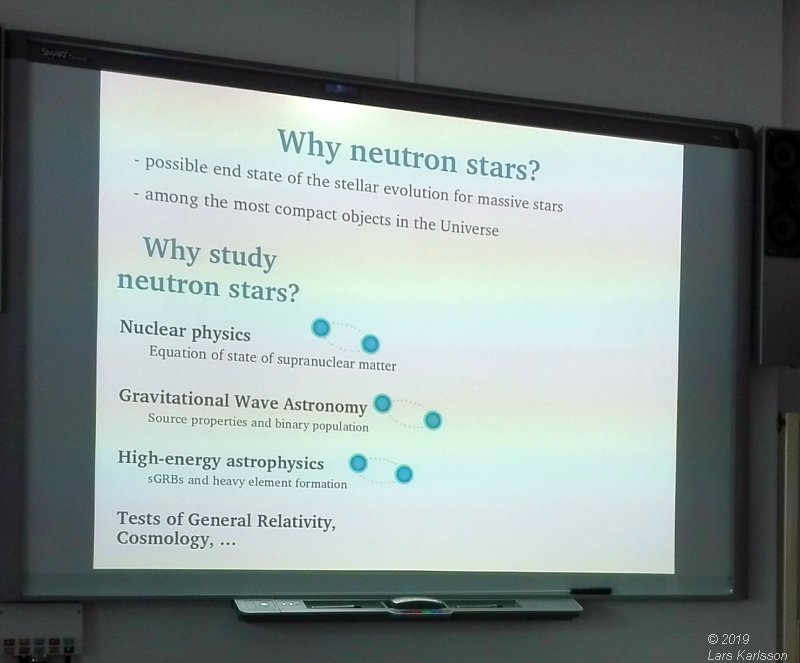
Some of the reasons:
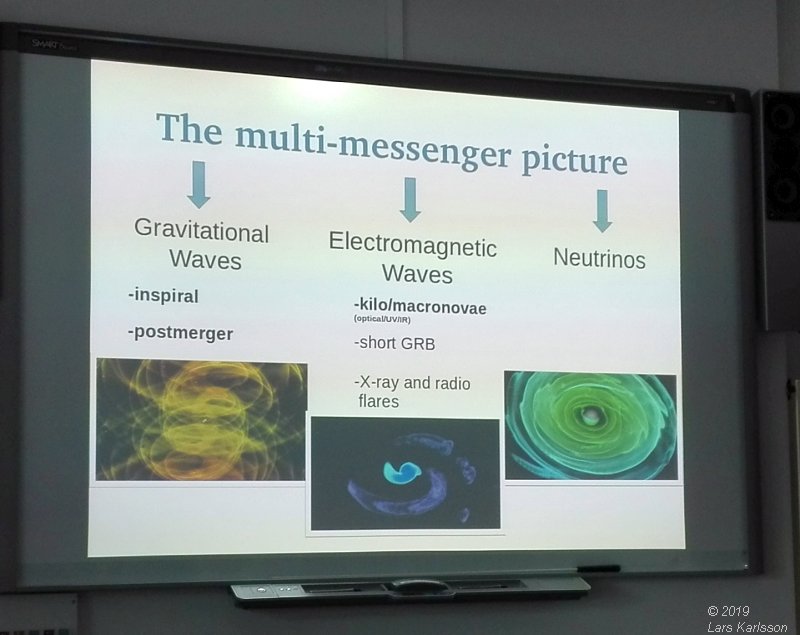
The signals we get from these objects create a multi-messenger picture:
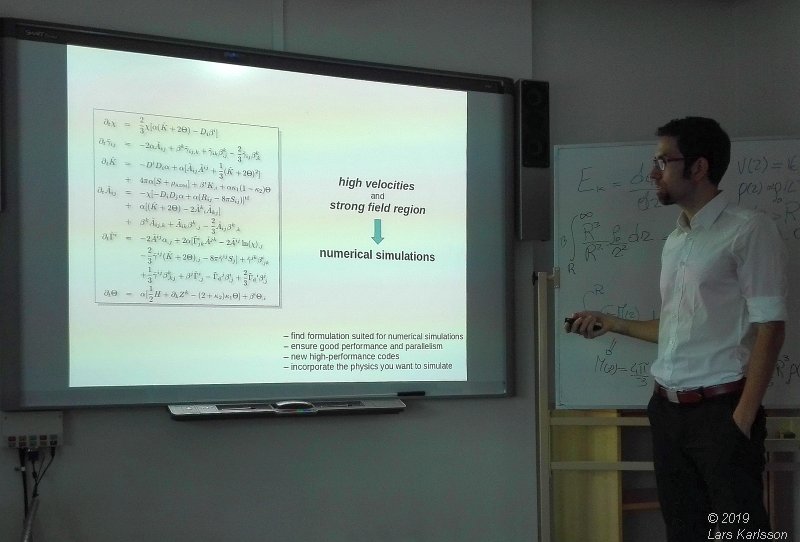
We don't get a complete image of the neutron stars from our instruments, especially when they merge. But it can be simulated with help of super computers. The field equations that are used is from Albert Einstein's General relativity. Some useful links, General relativity:
Lars: 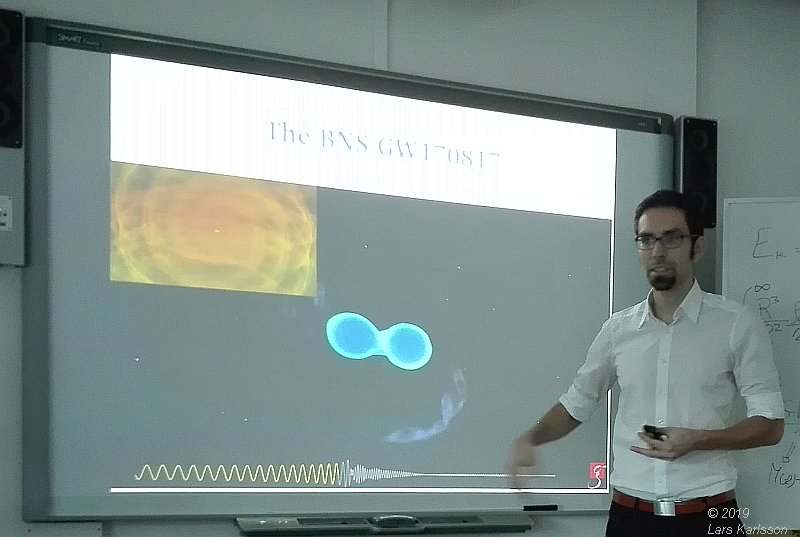
Tim tells:
Lars: 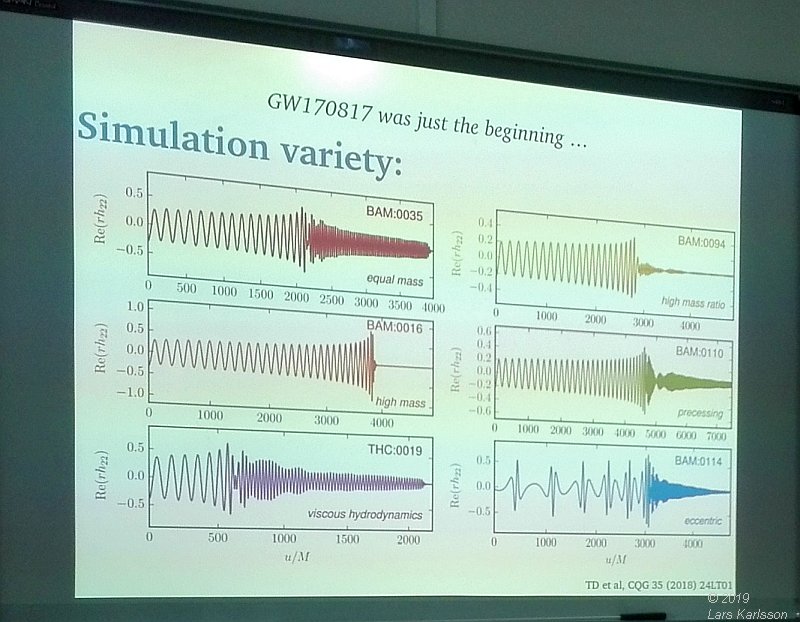
Tim tells: |
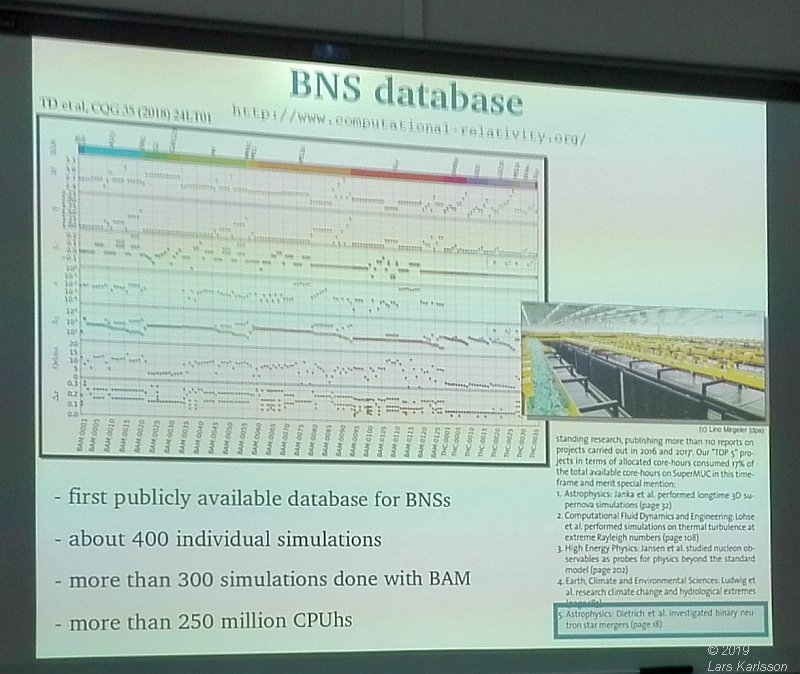
Tim tells:
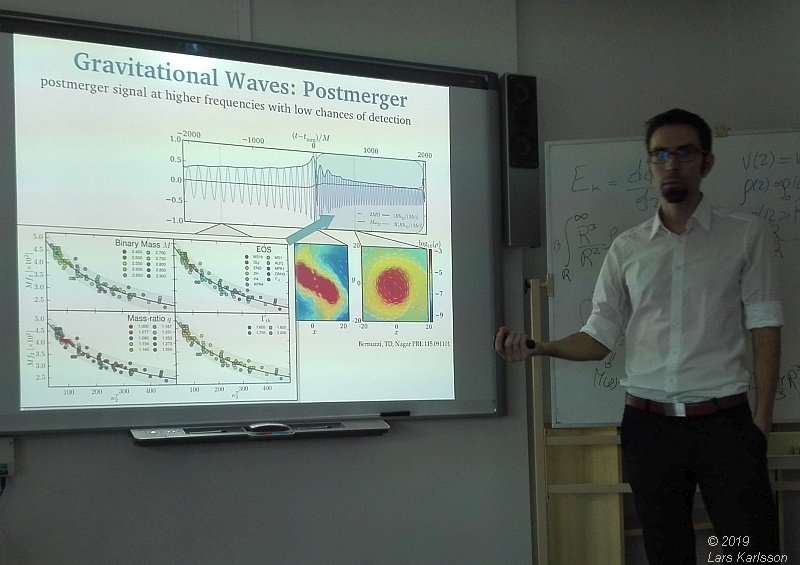
Tim tells:
Lars: 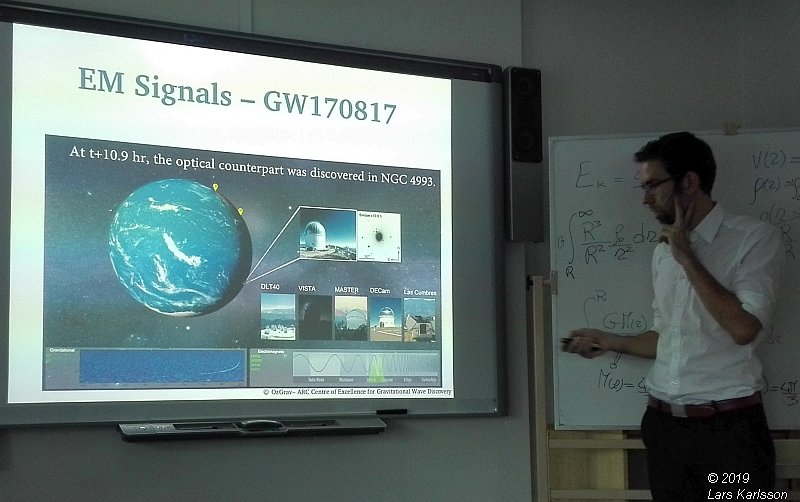
Tim explains that merging neutron stars will also create electromagnetic signals that can be detected. This was the case for GW170817 and its counterpart AT2017gfo. 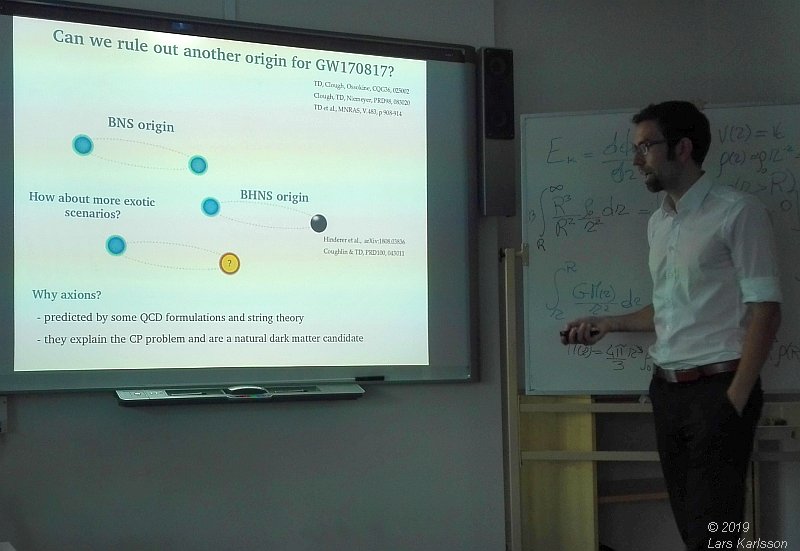
Can we role out another origin for GW 170817 ? 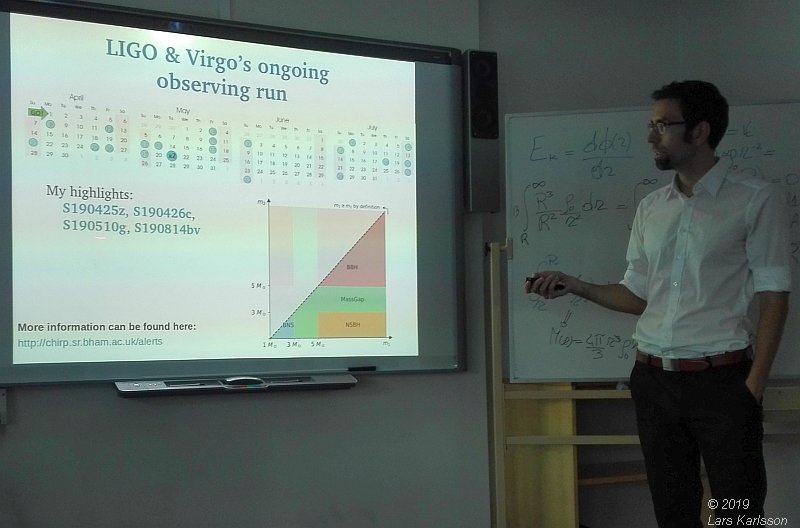
Tim explains the LIGO / Virgo source classification and say: The classification contains also binary black holes and black hole - neutron stars systems etc. and there have also been triggers that fall inside the green region. If you want to know more about Tim's research I have found a couple of links:
These seminars are a good cure to my boring days. Do you have boring days too? Join me next time!
If you don't live in Stockholm in Sweden as I do I'm sure that you can find something similar to visit at your place. Or you do as all other do, search the internet, TED Talks is good.
No more boring days!
|
| Go Back |